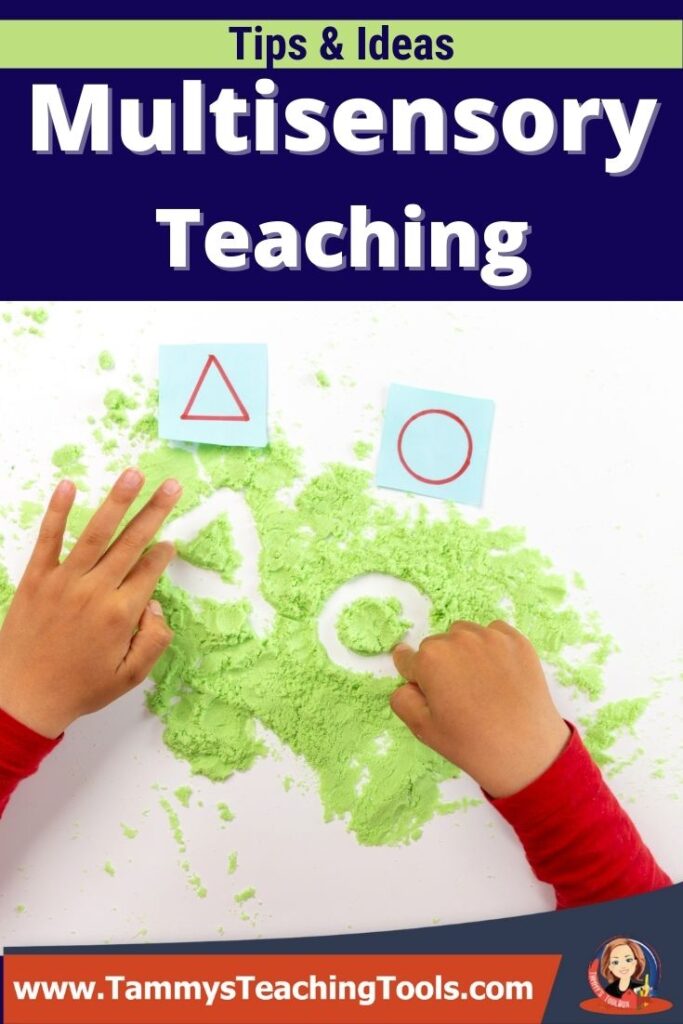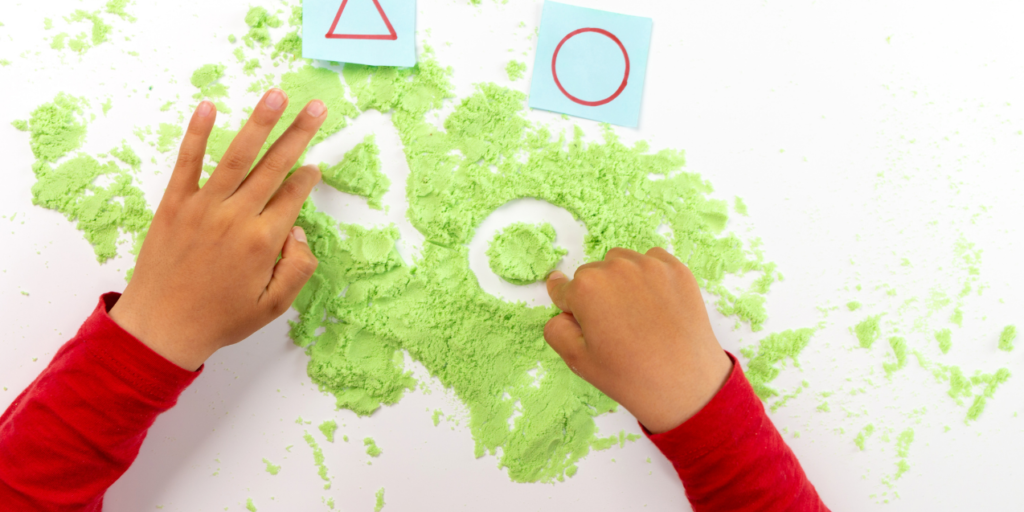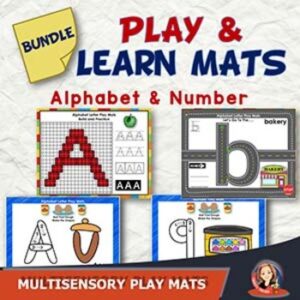Multisensory teaching is helping students learn by engaging multiple senses and it is a good teaching practice. In addition, it makes learning FUN! These strategies bring together techniques to help your students learn and grow the way their brains work. Read on to find out more about multisensory techniques that can help struggling readers.
What is multisensory teaching?
Multisensory teaching is the process of using multiple senses to help students learn. While most teaching is based only on sight and sound, multisensory teaching also incorporates tactile (feeling) and movement.
Why is multisensory teaching important in teaching reading?
Actively engaging readers using sensory learning helps students not only see the letters and words on the page but also feel them by manipulating words and letters with interactive lessons. Giving students more than one way to connect with information is crucial to developing strong reading skills. By using multiple ways to learn information, the brain has multiple ways to retrieve information.
In addition, multisensory reading is important in helping struggling readers. It particularly helps those with dyslexia. Dyslexia affects spelling and decoding abilities which impact reading. Adding multisensory activities to your teaching repertoire helps students learn through visual, auditory, tactile, and kinesthetic methods.
The Orton-Gillingham is one method that uses multisensory teaching methods to help struggling readers and is widely used with students who are diagnosed with dyslexia. Get your free information sheet on the Orton-Gillingham method here.
 Try to use as many senses as possible in each lesson you teach. Keep a stash of tactile objects like sand, dough, sandpaper, buttons, crayons, small balls, dry erase supplies, etc… handy. Always have students say sounds to help connect the sound to the visual and kinesthetic. See how you can easily boost student engagement and learning.
Try to use as many senses as possible in each lesson you teach. Keep a stash of tactile objects like sand, dough, sandpaper, buttons, crayons, small balls, dry erase supplies, etc… handy. Always have students say sounds to help connect the sound to the visual and kinesthetic. See how you can easily boost student engagement and learning.
Here are some of my favorite activities. You can use them anytime with any lesson.
► Sand writing
► Air writing
► Tossing a ball for each sound
► Sandpaper writing
► Color coding and highlighting
► Singing the sounds for words, sentences, etc….
► Finger tapping
► Building sounds using dough or other art media
► Using magnetic letters or letter tiles
► Touching and saying each letter and sound for decoding and spelling
► Listening to audiobooks and information
Alphabet and Play Dough
The basis of reading is learning the alphabet. For students that struggle with reading, letter formation can be a challenge. Use playdough to help them learn!
Engage students in multisensory reading activities like forming words and letters from play dough. Making the letters is a tactile activity that gives your students another way to practice and “feel” word building and letter formation.
No play dough? Have students make letters with shaving cream or construction paper. Building words engaging the sense of touch will help your students learn letters and word recognition!
Reading and Movement
Reading and spelling words out loud is one step in engaging learners but adding motion and movement into reading instruction is a helpful multisensory teaching method.
Clapping syllables or singing songs to spell words while dancing helps your students remember new words and how to spell them. Have your advanced readers make up their own songs to teach their classmates.
Even getting students moving during brain breaks with silly dances will engage their brains for optimal learning!
Multisensory teaching and learning in reading is so valuable for young readers and older readers who struggle! Your students use multiple senses of sight, sound, touch, and movement. These senses work in the brain to help students retain and process information. How will you use multisensory teaching in your classroom?
Check out this post on
What You Need to Know About Dyslexia and Orton-Gillingham Instruction
Happy Teaching,





